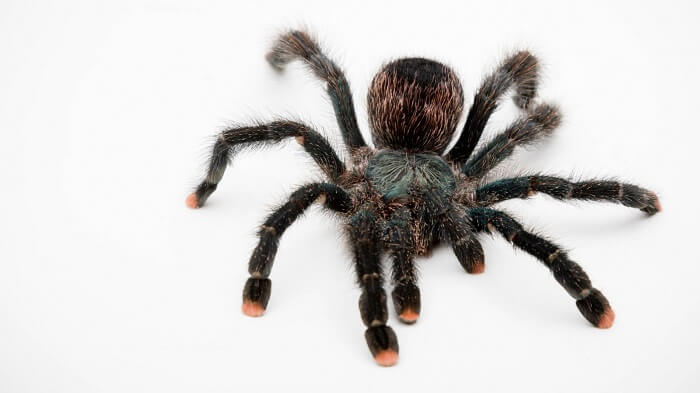Origin and history
As the name clearly points out, the Belgian giant rabbit is native to Belgium, having as its ancestors the Flander and Patagonian rabbit, imported from Argentina in the 16th century and well known in Belgium and France before disappearing.
This breed, created in 1825 in the Gent district of the Belgian province of Flanders, was declared the largest in the category of rabbit breeds for meat. Its origin falls under the specter of many theories, but no history of its formation has been established with certainty.
The Belgian giant rabbit was bred for meat and fur, being one of the most useful rabbit breeds in Europe. At the beginning of the 19th century, it was very strictly multiplied in the gray color variant. Later, by crossing it with other rabbit breeds, new color variants of the Belgian giant breed were obtained.
Physical description
The Belgian giant rabbit is one of the largest rabbit breeds in the world, weighing 7-8 kilograms and measuring almost 80 centimeters long.
The breed is described today as one with very rapid development, with young specimens of Belgian giant being able to reach 3 kg in the third month of life. This is an essential feature that allowed the creation of male lines for industrial crossovers. The Belgian giant reaches about 8 kilograms at maturity, but there have also been cases when the maximum weight was 10 kg
The Belgian giant rabbit breed has a long body, a large, rounded back, and solid hind legs. The legs are strong, muscular, and of medium length. The head is large, with a full chin and ears about 20 centimeters long, holding them in the shape of the letter V. Belgian giant males have a larger head than females, but females weigh more than males.
You might also like my articles with information on where rabbis live, how long they live, and whether they mate for life.
The Belgian giant rabbit’s fur is medium in length and silky, has a dense lower layer, and is shiny.
Initially, the Belgian rabbit had gray fur, but today it is available in several color variants, including white.
The weight of the animal is clearly correlated with its age:
- At 3 months, the rabbit should weigh at least 2,6 kg.
- At 6 months – it will approach 5,5 kg.
- After 8 months – 7 kg
Behavior and personality
The Belgian rabbit is calm, docile, and not as active as small rabbit breeds, preferring to linger rather than jump or run. It is friendly, being a very good pet for children. Being too heavy to be held, they are less likely to become aggressive.
The Belgian rabbit is indeed a gentle giant compared to other breeds of large rabbits. It gets along well with other animals.
What does a Belgian hare eat?
Rabbits of the Flanders breed are distinguished by their cleanliness; therefore, cages must be cleaned regularly, not leaving the leftovers of food and hay.
The Belgian rabbit’s food consists of good quality hay, fresh fruits and vegetables, rabbit pellets, and fresh water. It is important to keep in mind that this rabbit has a sensitive stomach and inappropriate food can cause it diarrhea. Here are some types of feed:
- Cereal;
- Solid feed;
- Corn, wheat;
- Mushrooms and root vegetables,
- cabbage, potatoes, beets, and carrots.
- And it is also possible to add pasta and pumpkin cleaned of seeds.
You can buy mixed feed, already balanced according to the characteristics of the breed.
It is very important to provide animals with permanent access to clean water.
Reproduction
Males reproduce starting from nine months and females are able to reproduce from eight months of age, giving birth to 5 to 10 offspring in a single farrowing. The reason is that the bones of the pelvis will fuse and it will be impossible to give birth naturally if they are too old. The Belgian female, after the age of three, should no longer give birth to offspring. The gestation period in the Belgian giant rabbit lasts 28 to 32 days.
Health issues
Disadvantages of the breed of rabbits in Flanders:
- Special attention is needed for the skin of the rabbit;
- Low fecundity of rabbits, which creates some difficulties in reproduction;
- When errors in the organization of nutrition happen, the animal will develop poorly, and the quality of the meat will decrease substantially;
- The maintenance of large animals requires a lot of free space;
- Animals have weak stomachs, so the choice of food requires special attention.
Belgian hare standards
 The breed standards of the Belgian rabbit require that the specimens have a cylindrical body, with a wide chest and croup, and that the spinal line is straight or slightly left and well developed.
The breed standards of the Belgian rabbit require that the specimens have a cylindrical body, with a wide chest and croup, and that the spinal line is straight or slightly left and well developed.
The neck of specimens of this breed should be relatively thick.
Both the hind and front legs should be muscular and strong, with brown-black or white claws.
The entire body is covered in black, blue-gray fur and puddled or reddish agouti. In the case of light-skinned specimens, the eyes are pink, and in those with dark colors, the eyes are the same color.
In Belgium, these rabbits are used for the productivity of meat and wool. From the age of 7-8 months, their subsequent maintenance is meaningless, because their maintenance costs will be higher than the potential growth profit. They can be used as fur animals, but their quality is somewhat inferior to the fur of smaller breeds.
The fact is that this giant rabbit, four times larger than normal rabbits, became famous beyond the country of origin. It was used for the development of several rabbit breeds around the world, and the first breed standards were set in the late 19th century.




